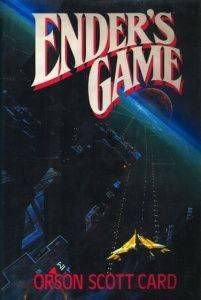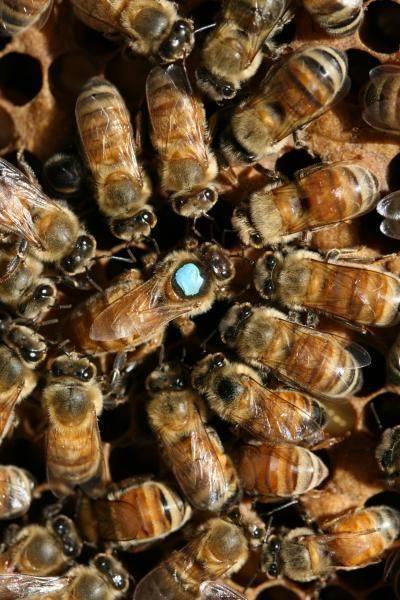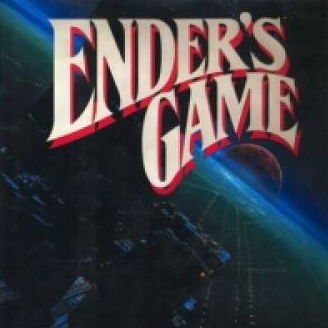 Sometimes when I watch a movie there is a moment so ridiculous that I get pulled out of the story line to shake my head at the shear laziness of Hollywood and their complete disregard of science. I call this my “science break point.” This happens to everyone, but our triggers are all different. It happened to me over the weekend when my husband dragged me to see Ender’s Game. Spoiler alert: I’m going to give away some plot lines while I discuses the movie’s misunderstanding of insect colonies.
Sometimes when I watch a movie there is a moment so ridiculous that I get pulled out of the story line to shake my head at the shear laziness of Hollywood and their complete disregard of science. I call this my “science break point.” This happens to everyone, but our triggers are all different. It happened to me over the weekend when my husband dragged me to see Ender’s Game. Spoiler alert: I’m going to give away some plot lines while I discuses the movie’s misunderstanding of insect colonies.
 Ender’s Game is a 1980’s sci-fi book written by Orson Scott Card as a part of The Ender Quintet, and it was recently turned into a movie directed by Gavin Hood. The basic premise is that insect-like aliens, called Formics, tried to take over the planet a couple of times (yep), and for decades children have been bred and trained for warfare to defeat the invaders.
Ender’s Game is a 1980’s sci-fi book written by Orson Scott Card as a part of The Ender Quintet, and it was recently turned into a movie directed by Gavin Hood. The basic premise is that insect-like aliens, called Formics, tried to take over the planet a couple of times (yep), and for decades children have been bred and trained for warfare to defeat the invaders.
During the first battle, which happens on Earth, a pilot flies his plane into a ship and all the other ships fail—something copied in Independence Day. The pilot (Mazer) becomes a hero, naturally, and is never seen by the public again and (*spoiler*) everyone assumes he died.
During a training session the main character, Ender, who is being groomed to be a battle commander, asks the pilot how he defeated the invading armies airships. They have a conversation that leads Ender to determine that the ship was a “queen” and the workers were immediately inactivated and useless after the queen ship exploded, since she controls the colony. The two characters go on to state that this is the battle strategy: kill queens and all the other workers will die and invasion won’t happen. So they all travel out into space to wage war on the alien home planet (the movie does not cover how we know where this is), somehow a few generations before we followed the alien species home. Then (*major spoilers*) Ender decides that killing the alien species isn’t good enough and torches their ENTIRE planet. It turns out that this was a good strategy. Then the movie closes with the military letting a teenager have a spaceship to relocate the last egg from a species they just exterminated.

To help me understand social insects and colonies, I interviewed two PhD candidates within the U of I Department of Entomology: Jo-anne Holley and Nicholas Naeger. Jo-Anne researches the evolution of colony structure in Argentine ants, and Nick studies multiple aspects of bee colonies, including queen loss and addiction. You might be thinking, based on what I said above, that I am going to rip apart the idea that a single egg can create a new colony. However, this might actually be plausible. As I understand it, there are species of fire and leaf cutting ants in which parthenogenesis is a possible way that new colonies are founded. Parthenogenesis is a type of asexual reproduction where an unfertilized egg develops into a functional adult. So, Ender taking a single unmated insectoid egg off into space to start a new colony is not actually science fiction but something that does occur in nature.
Alternatively, the idea/action of Mazer’s, that killing queens will win the war, is biologically improbable and why Ender’s plan is better. Besides the fact that a queen wouldn’t lead troops, killing a queen in an ant colony will not make the colony collapse. It will take about two weeks for the workers to rear a new queen, but otherwise, life in the colony would go on like normal.
In fact, in most insect colonies with a queen, the queen is an “egg slave.” She does not direct troops to defend the nest, she does not gather resources, and she does not do another other jobs besides mate once and lay a lot of eggs. There are a few ways that ant colonies deal with the loss of a queen:
- have more than one queen
- elevate a beta female to be queen
- workers start letting each other lay eggs (this happens all the time but is usually self-policed to prevent generating a bunch of males)
In none of these known responses does the entire colony immediately become non-functional. If too many males are reared, this can cause a colony to collapse, but it takes time and would not immediately cause Mazer to win a battle. In successfully invasive ant species like Argentine ants (fire ants), which may be more parallel to the invading Formics, the colonies usually have a lot of queens and the colony expands by budding instead of a mating flight, leading to a new colony.
These budded colonies recognize each other through odor, so there is less infighting, and the new nest draws resources from the old one while it is being established. This multiple queen strategy and queen loss compensation mechanisms are why killing an entire planet really was a better idea, even if the military involved in the movie did not know that. In other eusocial insects like honey bees, there are no “invasive” species. In bee colonies if a queen dies the workers just feed an egg more insulin and it turns into a queen. Queens die all the time and the workers know how to deal with this situation. If the Formics are more like bees than ants, then the loss of a queen would likely result in infighting if there are no leftover eggs available to turn into a new queen. Either way, it wouldn’t stop a war with another colony or species.
So, Hollywood: for the record, killing a queen insectoid thing is not going to immediately end a battle… instead, it will result in a new queen after about 14 days.
———
Beehive image: Margaret Coulombe at Arizona State University.
Ender’s Game book cover image: John Harris and Tor Books
Movie image: rottentomatoes.com








